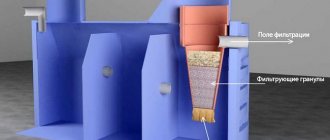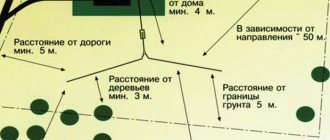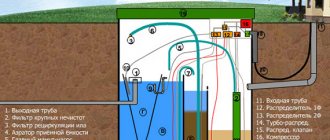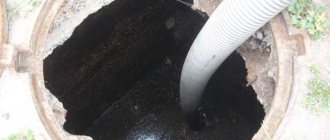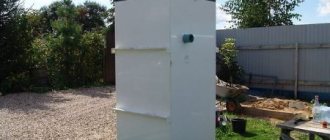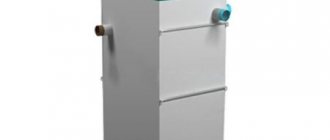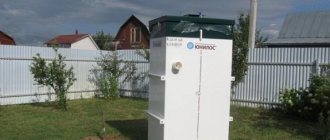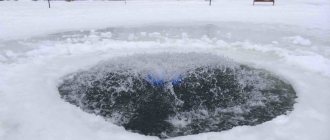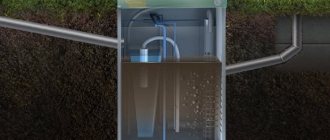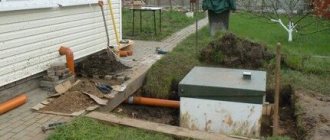The Termite septic tank is designed to solve one of the most important problems in landscaping a summer house or country house - installing a sewer system. A large selection of models that differ from each other in volume, productivity and degree of wastewater treatment allows you to select a unit of this brand for any area and number of consumers.
Termite is deservedly popular among the population of Russia and neighboring countries. Indeed, thanks to these structures, residents of areas remote from centralized sewerage systems can lead a completely comfortable lifestyle.
ABOUT
"Termite" is a product that produces large-sized containers made of polyethylene in the city of Cherepovets, Vologda region. The manufacturer has an extensive network of branch warehouses in large cities throughout the Russian Federation (St. Petersburg, Moscow, Arkhangelsk, Tyumen, Nizhny Novgorod, Lipetsk, Izhevsk), as well as a large number of official dealers (more than 140) in other cities of Russia and the CIS countries .
Polyethylene containers are produced using vacuum and rotational molding. Production facilities make it possible to create solid cast products of complex shape with a volume of 10 to 10 thousand liters. The dimensions of polyethylene products can reach 2 meters in cross section and up to 4.5 meters in length.
Photo: Termite septic tank on the site before installation
The container wall thickness declared by the manufacturer is 20 mm. Termite polyethylene containers can serve for a long time (more than 50 years).
Note! The product technical data sheet contains information that there may be gaps in the plastic from inside the case, which in fact (according to the manufacturer) are not a defect. This is just a visual effect that occurs due to the uneven distribution of the dye in the polymer.
Manufacturer contacts
Septic tank Termite is produced in the Irdomatka area, Vologda region, in the city of Cherepovets. You can contact the manufacturer by calling the general toll-free federal phone number: 8-800-700-34-61.
In Moscow you can contact the following companies:
- “Remservice”, contact phone number –, located at: Borisovskie Ponds 8/2
- “Rus-Bao”, contact phone number – located at: Podbelskogo Ave., 16. Of. 160
- “GorElectro Plus”, contact phone number – office located at: Nagorny proezd, 10A
Contacts in St. Petersburg:
- “Termite”, contact phone number – office located at: Engels Ave., 178
- "ROST-ORG", telephone number for communication -, office is located at the following address: st. Rybinskaya, 5 A, office. 309
- "Plast-Service", telephone number - office address: Metallostroy, st. Zheleznodorozhnaya, 12A
Design and principle of operation
The Termit septic tank is a sealed container made of polypropylene, reinforced with stiffeners to ensure strength.
The inside of the tanks is divided by plastic partitions into 2 or 3 compartments (the number of compartments depends on the modification), connected by overflows.
Diagram of the internal structure of a two-chamber model
Wastewater treatment in a septic tank occurs in stages:
- Once in the first compartment of the container (sump), sewage is divided into solid particles (settled at the bottom), fats (collected in the form of a film on the surface) and water (occupies the middle part of the chamber). Water flows through the overflow into the second compartment. The overflow is configured to prevent solid fractions and floating greasy film from entering the second compartment.
- In the second and third (if provided for in the design) compartment, further clarification of conditionally pure water occurs. Anaerobic bacteria come to work. These microorganisms enter drains along with human waste. They break down solid organic particles. As a result, the liquid becomes cleaner, and small undivided fractions settle to the bottom. The life activity of bacteria occurs without the participation of oxygen. The degree of wastewater purification at the outlet of the tank is 75-85%.
- Since the level of sewage treatment at the outlet of the unit is insufficient for direct discharge into the ground or drains, another stage of filtration is provided. It occurs outside the unit. The effluent from the septic tank ends up in a device called an irrigation dome. This is a device without a bottom, which is installed above a specially dug pit. The pit space is filled with crushed stone and sand. The water filters through this natural filter, after which it becomes quite suitable for irrigation or other technical needs. If the need for such water does not arise, then it is simply allowed to be freely absorbed into the soil.
Post-treatment device - irrigation field dome
The dome shape of the irrigation field ensures the distribution of liquid along the entire length of the pit. It is made of low-density polyethylene with a thickness of up to 15 mm. In the center of the product there is a pipe with a diameter of 110 mm with holes for supplying water from the septic tank. At the top of the dome there is a hole for ventilation.
Typical installation diagram for a Termite septic tank with an irrigation field dome (for soils with low groundwater level)
Note! To equip treatment fields, it may be necessary to install several domes. Their quantity should be determined at the rate of 1 product per 1 cubic meter. cleaning container.
How does a Termit septic tank work? Its features.
This device has a number of advantages that should be taken into account before choosing a septic tank model:
— the device is completely energy independent. There are absolutely no parts that require electricity to operate. — Termit septic tank models have various properties and modifications, so you can choose a unit for any conditions. — the availability of Termite septic tanks is explained by their optimal price-quality ratio — the degree of cleaning of the device reaches 95% when using post-treatment facilities. — the design is reliable and durable. The service life can be more than 50 years.
Despite all the obvious advantages, the Termite septic tank also has some disadvantages:
— without the use of post-treatment facilities, the degree of water purification does not exceed 80%. And such liquid, according to sanitary standards, cannot be poured directly into the ground. This can cause contamination of groundwater and soil.
The lineup
The Termit septic tank is available in various versions: from simple storage tanks to more advanced systems with forced pumping of liquid.
Drives
These are sealed tanks used to collect household wastewater. As the containers fill, they must be pumped out. They are installed in areas where there is no possibility of installing infiltration structures for soil purification. These are mainly regions with quicksand, or natural areas in which the discharge of any wastewater is completely prohibited. The design of the drives does not provide for the presence of an outlet pipe. This type of installation involves the simplest installation and operating principle; in fact, they perform the function of sealed cesspools.
Storage – Termite
The drives are available in six modifications. The smallest tank has a volume of 1200 liters, followed by the Termit 2 septic tank with a volume of 2000 liters. The largest capacity holds up to 5500 liters.
The most popular among summer residents is the Termit 2 septic tank. It has small dimensions and can cope with the seasonal load of a small country house.
Technical characteristics of the models can be found in the table.
| Drive model | Volume, l | Length, m | Width, m | Height, m | Installation weight, kg |
| 1.2 | 1200 | 1.34 | 1.16 | 1.565 | 80 |
| 2 | 2000 | 1.595 | 1.155 | 2.005 | 105 |
| 2.5 | 2500 | 2 | 1.155 | 2.005 | 120 |
| 3 | 3000 | 2.3 | 1.155 | 1.905 | 135 |
| 3.5 | 3500 | 2.41 | 1.19 | 2.005 | 175 |
| 5.5 | 5500 | 2.22 | 1.65 | 2.395 | 215 |
Note! The dimensions of polymer products, depending on the ambient temperature, can vary in one direction or another within 3%.
Termite Pro
The septic tank Termit Profi is a non-volatile installation. It is intended for processing wastewater in summer cottages with seasonal residence.
The disadvantage of Termite Pro septic tanks is the fact that they can only work in areas with low groundwater levels.
Line of septic tanks Termit-Profi
produces units of this type in five modifications. The least powerful of them is the Termit Profi 1.2 septic tank with a capacity of 400 liters per day, capable of serving no more than 2 people. Septic tank Termit Profi 5.5 is the most powerful unit with a capacity of more than 5000 liters per day.
| Modification | Volume, l | Productivity, l/day | Number of people | Length, m | Width, m | Height, m | Installation weight, kg |
| 1.2 | 1200 | 400 | no more than 2 | 1.34 | 1.16 | 1.565 | 80 |
| 2 | 2000 | 800 | 3-4 | 1.595 | 1.155 | 2.005 | 125 |
| 2.5 | 2500 | 1000 | 4-5 | 2 | 1.155 | 2.005 | 135 |
| 3 | 3000 | 1200 | 5-6 | 2.3 | 1.155 | 1.905 | 165 |
| 3.5 | 3500 | 1800 | 6-7 | 2.41 | 1.19 | 2.005 | 185 |
| 5.5 | 5500 | 2200 | up to 12 | 2.22 | 1.65 | 2.395 | 265 |
The most popular among owners of summer cottages is the Termit 2 septic tank, as it has average productivity and is quite capable of processing wastewater from a small country house.
Transformer S Series
This is a series of installations with gravity drainage.
The inside of the containers consists of 3 chambers. The overflow from the first to the second chamber is equipped with a large-fraction filter. The second compartment is filled with polymer filler to create comfortable working conditions and the growth of anaerobic bacteria. From the last compartment, purified water flows by gravity into the dome of the sprinkler for soil purification.
On the body of the Termit Transformer S septic tank there are two pipes (inlet and outlet) of the same diameter 110 mm and a length of 60-100 mm.
Septic tank Termite Transformer S
Transformer PR series
The internal structure of these units is similar to Termite Transformer S septic tanks. Their only difference is that the models of the Transformer PR series provide for the installation of a drainage pump for pumping water from the last section to the filtration fields.
Septic tank Termite Transformer PR
The transformer PR septic tank pipes have different diameters: 110 mm (inlet) and 32 mm (outlet).
Technical characteristics of various modifications of septic tanks Transformer S and Transformer PR are presented in the table.
| Modification | Volume, l | Productivity, l/day | Number of people | Length, m | Width, m | Height, m | S/PR unit weight, kg |
| 1.3 | 1300 | 500 | up to 2 | 1.565 | 0.785 | 2 | 105 |
| 1.5 | 1500 | 600 | 2-3 | 2 | 0.8 | 2 | 110 |
| 2 | 2000 | 800 | 3-4 | 2 | 1 | 2.1 | 130 |
| 2.5 | 2500 | 1000 | 4-5 | 2.05 | 1.05 | 2.11 | 145/155 |
| 3 | 3000 | 1200 | 5-6 | 2.19 | 1.2 | 2.07 | 165/170 |
The most popular among the population is the Transformer 2 installation. It has a capacity of 800 liters per day, which is quite sufficient for an average family of 3-4 people.
Note! The design features of Transformer septic tanks make it possible to modernize the devices and convert them into an Ergobox deep biological treatment station with a wastewater treatment rate of up to 98%. It is quite possible to do this yourself if you buy an aero kit in addition to the standard equipment.
The installation process of the aero kit can be seen in the video.
Design
A modern septic tank Termite is an installation designed to receive and treat wastewater from domestic sewage systems. The model's body is made of plastic and has a rectangular shape. Inside, the structure is divided into separate sections connected by overflow devices.
Depending on the model, the installation may have two or three cameras, the purpose of each of them is:
- a storage receiver that also performs the functions of a primary settling tank;
- additional settling tank combined with a bacterial filtration chamber. To ensure the flow of biotreatment processes, plastic brushes are installed here, on the surface of which colonies of bacteria are placed that purify wastewater;
- some models also have an additional chamber for secondary water retention before being discharged outside.
How does it work?
The process of sewerage wastewater treatment proceeds according to the following scheme:
- Through a pipe leading from the house, the liquid enters the storage receiver, where it remains in a state of rest for some time. During this time, heavy impurities contained in the water have time to settle to the bottom, and the water, freed from most of the inclusions, is supplied through the overflow to the next compartment;
- the overflow is located in such a way that settled particles do not have the opportunity to enter the next chamber; they remain at the bottom of the primary settling tank, where they undergo the process of anaerobic digestion;
- Once in the second section, the liquid is further settled and also subjected to biological treatment. Colonies of bacteria living in this chamber make it possible to partially remove organic contaminants;
- if there is an additional chamber, the water in it is further settled, finally freeing itself from undissolved inclusions.
Site selection
Installation and installation of a septic tank begins with choosing a location. The efficiency of the installation largely depends on this. When choosing a future location, you should consider:
- Natural slope of the area. It is better to place the container below the level of the house.
- Availability of access roads. Installation of a Termit septic tank must take into account the possibility of access of a sewer truck to the installation. It should be remembered that the length of the standard hose of such a machine is 6 meters.
- Distance from the house to the septic tank. Experts consider the optimal distance to be about 5 meters. If it is not possible to install an autonomous sewer system at such a distance from the house, then you should remember that if the supply pipeline is too long (more than 15 meters), it becomes necessary to construct intermediate wells for cleaning.
- Distance from bodies of water. The Termite septic tank should be installed no closer than 25 meters to natural bodies of water or sources of drinking water.
Advantages of systems from Cherepovets
Termit septic tanks are made from primary raw materials, which significantly increases the quality mechanical parameters of the structure, minimizes fragility and the likelihood of integrity damage during operation.
The advantages of products manufactured include the following characteristics:
- gravity drainage does not require connection to electricity;
- simple and easy to use;
- affordable cost of components;
- the presence of a flushing filter that does not require frequent replacement;
- seamless body made of high quality polyethylene;
- the cleaning system is represented by two or three chambers;
- installation does not depend on the height of groundwater;
- autonomous operation;
- long service life.
What do you know about combed plumbing flax, used for connecting pipes and fittings? A useful article explains why natural material is more reliable than polymer material - Fum tape.
Watch a video of soldering polypropylene pipes in hard-to-reach places here.
On the page: it is written about geotextiles for drainage pipes.
The consumer has the opportunity to choose and purchase the most convenient block of modular design.
Installation
Installation work for installing a septic tank is carried out in the following sequence:
- Preparing the pit and trenches. The depth of the pit must correspond to the dimensions of the installation, taking into account the arrangement of the bottom with sand backfill (100 mm). The length and width of the pit are calculated in such a way that there is at least 250 mm of space left on all sides of the container to the walls of the pit for backfilling. Trenches are dug with a slope of 20 mm per 1 linear meter (2%). The bottom of the trenches is covered with a sand cushion and compacted.
- Installation of the Termit septic tank in places with high groundwater is carried out in such a way as to exclude the possibility of the tank floating up during spring floods. To do this, the container in the pit is attached with synthetic bandage cables to the anchor plate. In this case, a reinforced concrete slab with elements for fastening cables is first lowered into the pit, and only then the unit itself.
- After the Termit septic tank has been installed, backfilling of the container with cement-sand mixture begins. The work is carried out in stages with the obligatory compaction of each layer and simultaneous filling of the container with clean water.
- The top of the unit is insulated with sheets of polyethylene foam with a thickness of at least 30 mm. During winter cold, the protruding parts of the neck and the lid should also be insulated.
Photo: installation of a Termite septic tank in a pit before (left) and after the sprinkling procedure
Basic installation rules
This station is easy to install. Therefore, you can install it yourself without any problems. This will allow you to save on the services of hired workers, which are expensive these days.
Some septic tanks allow you to use the decomposition products pumped out of them as fertilizer immediately. However, in the case of Termite, you will have to wait a couple of years.
Installation instructions are included with the kit. For installation, in addition to the kit itself, you will need 2 pipes, fittings, insulation and sand.
How to install Termite with your own hands:
- The first step is to dig a pit. Moreover, its dimensions should be greater than the dimensions of the septic tank in width and height by about a quarter of a meter.
- A septic tank must be placed in the excavated pit. This is best done with special equipment, since the tanks are quite heavy.
- Now you need to mix sand and cement. To do this, take three parts of cement and one part of sand.
- The tanks are filled with the mixture. Moreover, this must be done exactly until they are hidden under a layer of sand-cement composition.
- Next, the system is connected to the sewer system. A water supply system is also installed to drain purified water.
To install a septic tank correctly, you need to familiarize yourself with the recommendations of professionals.
In the process of this work, thermal insulation is also installed. It is necessary to ensure that the system does not fail for a long time and functions fully.
Reviews
The first impression of the Termite septic tank from people who bought it is quite positive.
The specialists involved in the installation of units of this brand also have no complaints.
Reviews from owners who have tested the Termite septic tank indicate that they are quite satisfied with the device.
Negative reviews about Termite septic tanks are also sometimes found. Users note the appearance of an unpleasant odor some time after starting use.
In addition to our article, the video presented will help you draw your own conclusions, as well as form an opinion about the pros and cons of Termite septic tanks.
Disadvantages identified by consumers
The level of functionality of the Termit septic tank is extremely rarely characterized negatively, but the wrong choice of model or illiterate installation of the structure often becomes the reason for the following negative reviews:
- lack of a deep cleaning system and filters that eliminate unpleasant odors (read reviews of the use of the drug “Doctor Robik 509” here);
- sometimes, there is an uneven distribution of load on the plastic case;
- a rectangular shape without rounded corners provokes the accumulation of stress and deflection of the walls;
- installation of a septic tank requires mandatory cementing of the pit and the use of a high-quality anchor device;
- there is no possibility to perform cleaning at a temperature of -10°C or lower;
- it is necessary to apply waterproofing in winter;
- operation requires the use of a sewer truck once or twice a year;
- high financial costs for installation compared to biological treatment structures;
- labor-intensive land installation work associated with equipping the sprinkler, filtration pit and post-treatment system.
Disadvantages also include the complexity of the septic tank installation diagram and self-installation of the device.
